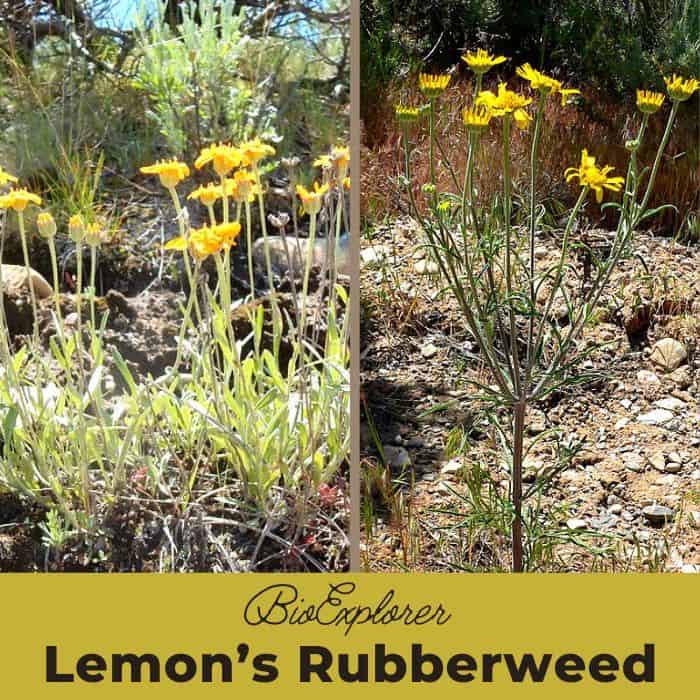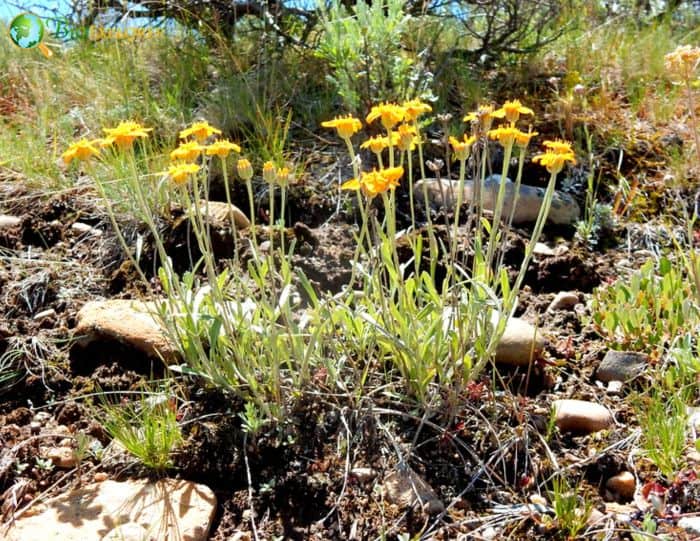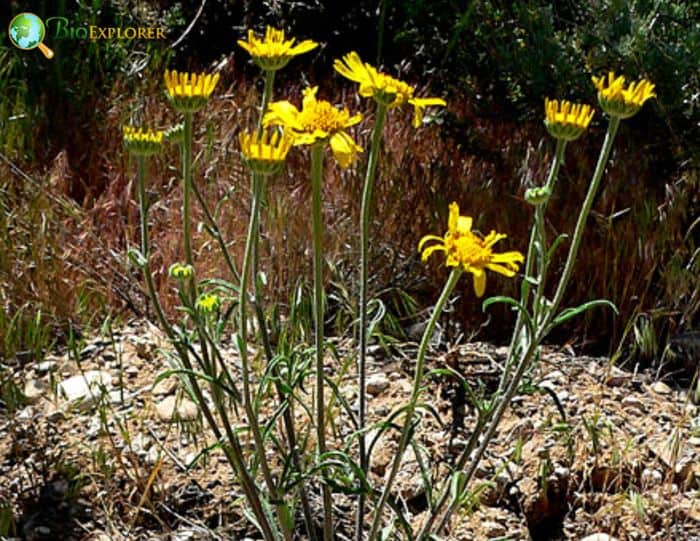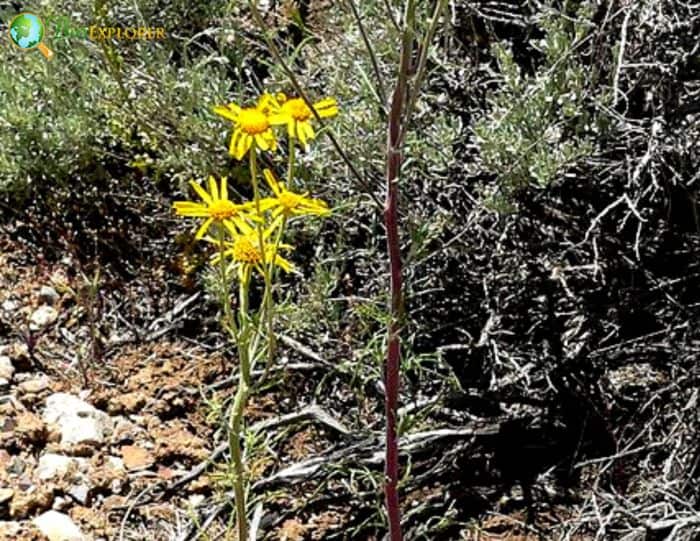
| Plantae | Asterales | Asteraceae | Hymenoxys | Hymenoxys lemmonii |
- Plant Type: Biennial, Perennial herb.
- Common Names: Lemon’s Rubberweed, Lemon’s Bitterweed, Alkali Hymenoxys.
- Color: Yellow
- Flower Dimensions: 0.6 inches wide.
- Flowering Seasons/Month: Summer (June to September).
- Desert with Lemon’s Rubberweed: Great Basin.
Lemon’s Rubberweed Flower Characteristics

Hymenoxys lemmonii is a perennial herb of the Asterceae family. The plant can grow to a height of 15-20 inches.
- The leaves of the Lemon’s Rubberweed are straight and dark green. It measures 3.6 inches in length. The leaf blades are simple or lobed.
- Hymenoxys lemmonii has one or more branches (3-10). Their stem is hairless.
- The stem of the H. lemmonii is purple-red tinted proximally, or it can be green throughout.
- Lemon’s Rubberweed flowers are Daisy-like. The flower has thick golden disk florets and shaggy golden ray florets.

Lemon’s Rubberweed Facts

- The generic name Hymenoxys is from the Greek word “hymen” and “oxys“, which means “membrane” and “sharp” respectively.
- The plants of the genus Hymenoxyscontain sesquiterpene lactone hymenoxon, which is toxic to sheep. H. lemmonii[1] is considered one of the poisonous plants in North America affecting sheep and goats.
- Scientists[2] discovered sesquiterpene lactone aglycones and glycosides from the Hymenoxys lemmonii. It is listed as a poisonous plant[3].
- In research[4] conducted, only the H. lemmonii has recovered enough in high severity burn areas to support the endemic butterflies.
- The species name “lemmonii” was derived from John Gill Lemmon[5] (1832-1908). He was the husband of Sarah Plummer Lemmon, a famous American botanist. It is estimated that 3% of Arizona’s native plants were named by this couple.
Cite This Page
APA7MLA8Chicago
BioExplorer.net. (2025, May 27). Lemon’s Rubberweed. Bio Explorer. https://www.bioexplorer.net/plants/flowers/lemons-rubberweed/.
BioExplorer.net. "Lemon’s Rubberweed" Bio Explorer, 27 May 2025, https://www.bioexplorer.net/plants/flowers/lemons-rubberweed/.
BioExplorer.net. "Lemon’s Rubberweed" Bio Explorer, May 27 2025. https://www.bioexplorer.net/plants/flowers/lemons-rubberweed/.











